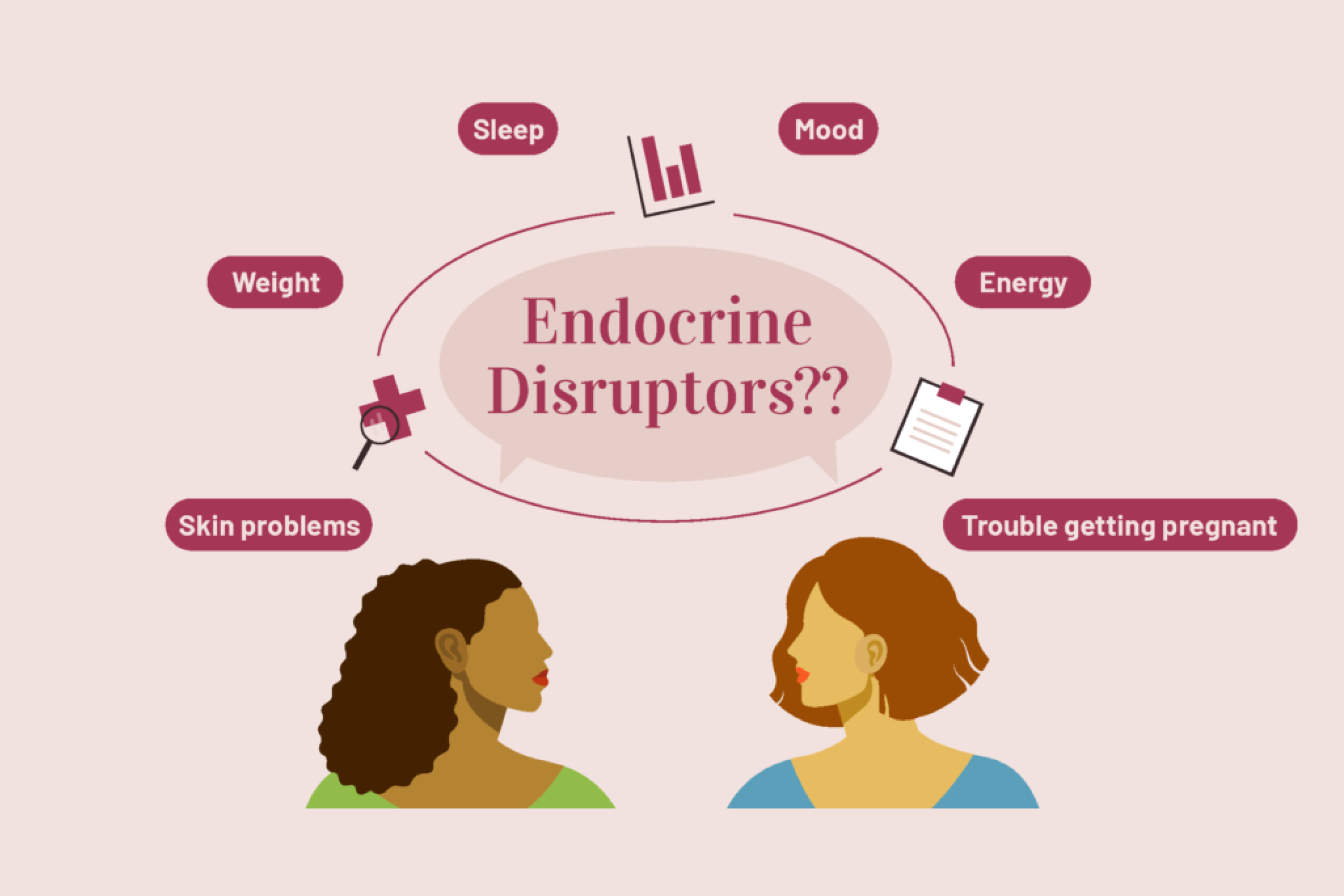We live in a world where we are constantly exposed to a variety of chemicals and substances on a daily basis. There are some chemicals, in particular, that can wreak havoc on your endocrine system. These chemicals are known as endocrine disruptors and can detrimentally affect your health. Learn about some of the most common endocrine-disrupting chemicals and steps you can take to reduce your exposure.
The endocrine system consists of glands distributed throughout the body responsible for producing hormones that help the body regulate normal growth, reproduction, fertility, sleep, body weight and metabolism, mood, and a variety of other important functions. The human body is dependent on hormones for a healthy endocrine system, and even the smallest disruptions can have a huge impact.
Endocrine disruptors are chemicals that can mimic or interfere with the body's natural hormones, and can be found in food, water, skincare, makeup, and hair care products, furniture, cookware, paper receipts, pesticides, plastic, food packaging and wrappers, and a variety of other consumer products. Common endocrine disruptors include phthalates, bisphenol A (BPA), PFAS, certain pesticides, and flame retardants. According to the Endocrine Society, there are over 1,000+ human-made chemicals that could be endocrine disruptors. Some of the most studied endocrine disruptors include:
Atrazine
Atrazine is a herbicide often used to control weeds in corn, sorghum, and sugarcane crops.
Bisphenol A (BPA)
BPA is used to make polycarbonate plastics and epoxy resins, and can be found in plastic water bottles, food storage, food packaging, toys, the lining of canned foods and beverages, and other consumer goods.
Dioxins
Dioxins are a byproduct of manufacturing processes such as herbicide production and paper bleaching, and can also be released into the air from wildfires and burning waste.
Perchlorate
Perchlorate is a colorless salt used to make rockets, explosives, and fireworks.
Per- and polyfluoroalkyl substances (PFAS)
PFAS are a large group of chemicals used widely in nonstick pans, waterproof clothing, firefighting foam, furniture coating, food packaging, and paper. There are over 4,700 PFAS chemicals, some of which have been linked to cancer, thyroid disease, developmental defects, and other health issues.
Phthalates
Phthalates can be found in hundreds of products, including some food packaging, cosmetics like cleansers, nail polish, hair spray, shampoo and conditioner, fragrances, and children’s toys.
Phytoestrogens
Phytoestrogens are naturally occurring substances found in some plants, like the soybean, and thus are found in some soy foods.
Polybrominated diphenyl ethers (PBDE)
PBDE are found in flame retardants in furniture and carpet.
Triclosan
Triclosan is an additive found in some antimicrobial and personal care products, like liquid body wash and soaps.
Ways to minimize your exposure to endocrine disruptors include:
- Filter water.
- Replace plastic food containers with glass, stainless steel, or ceramic containers.
- Opt for email receipts instead of paper receipts.
- Avoid products that have ‘fragrance’ listed as an ingredient.
- Swap non-stick cookware for stainless steel, cast iron, or enameled or anodized aluminum cookware.
- Review ingredients in your skincare, makeup, and hair care products, and switch for a safer alternative if needed.
- Avoid produce that contains certain endocrine-disrupting pesticides.
- Minimize fast food consumption, which often comes in food packing or wrappers that are treated with PFAS.
- Pop popcorn on a stovetop instead of using microwaveable popcorn bags, which are often internally coated with PFAS.
Sources:
NIH: NIEHS: Endocrine Disruptors
published: Feb. 15, 2024, 3:32 p.m.

